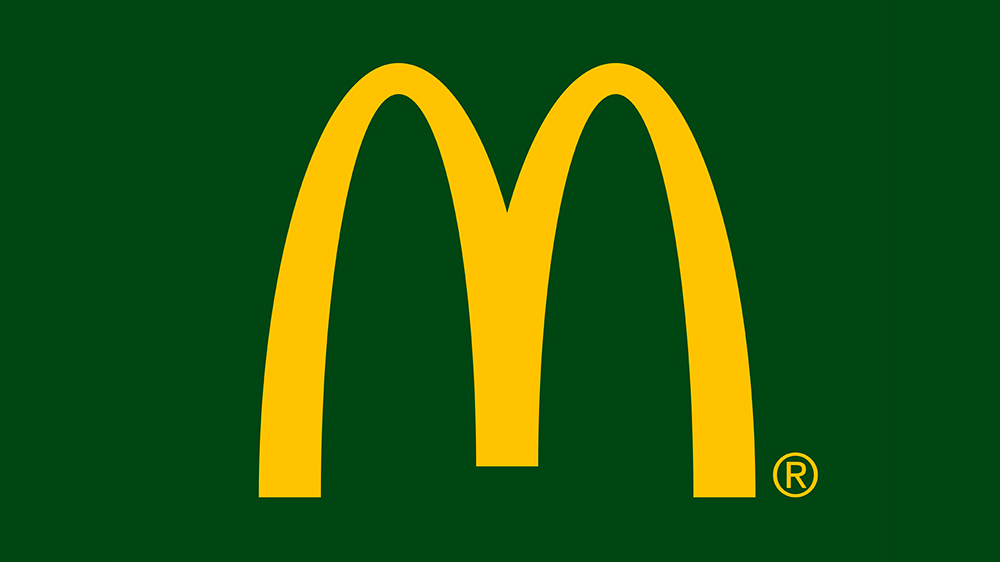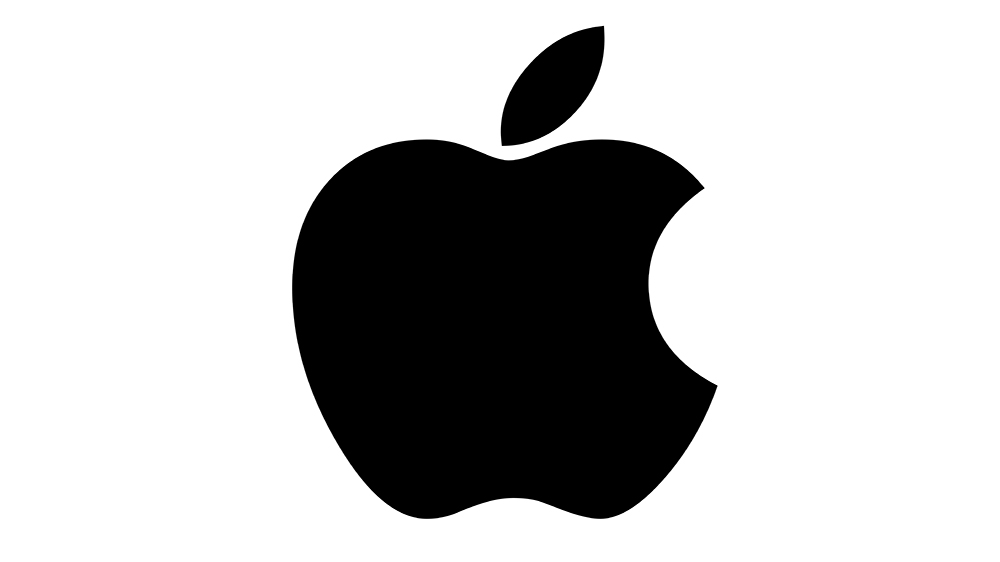8 iconic American logos that changed branding forever
These successful US brands have taken over the world: here's what you can learn from their logos.
Over the last half-century, a handful of giant American brands have achieved world domination. For better or worse, the eight logos below are everywhere.
So what lessons can we learn from them? Well, besides their total ubiquity – repetition breeds familiarity, after all – and the objective quality of their design, there are some common factors.
Like with many of the 20 biggest logos of 2017, half of these US brand logos are primarily wordmarks with small memorable details – which range from simple graphic flourishes to unique combinations of colours – that are enough to set them apart from the competition.
The other half are based on very simple symbols that have achieved standalone recognition with no company name required. They have the silhouette factor: pare them back to pure black and white, with no detail, and you can still pick them out of a lineup instantly.
Read on to discover what eight of the most iconic American logos can teach us about branding...
01. Coca-Cola: Preserving brand heritage

Dr John S Pemberton may have perfected the Coca-Cola formula in the 1880s, but it was his book-keeper Frank M Robinson who not only chose the name, but also penned it in the distinctive cursive script that would define the brand over the next century.
Robinson chose an elaborate Spencerian scrawl that was fashionable in the late 19th century. But while other brands – notably arch-rival Pepsi – later dropped their 'handwritten' wordmarks in favour of something cleaner and more modern, Coca-Cola stuck to its guns.
Daily design news, reviews, how-tos and more, as picked by the editors.
Plenty of evolution and refinement has taken place, but the confidence to stick to that cursive script logo helped shape it into one of the world's most famous logos.
What can we learn from Coca-Cola? The simple adage that if it isn't broken, don't fix it. Can you imagine setting Coca-Cola in a neutral sans-serif font? No: the heritage and brand collateral accumulated in that script is far too important to lose.
02. McDonald’s: Having the sense to change direction

Who could have guessed that the company that started in 1940 as 'McDonald's Famous Barbecue' would grow into the biggest fast-food chain on the planet?
The first iteration of McDonald's now-iconic 'M' logo arrived in 1961, referencing the restaurant's distinctive architecture, designed by Stanley Meston: a pair of illuminated golden arches.
Like Coca-Cola, the brand has seen various incremental updates – added shadows, new slogans, and notably the confident removal of the wordmark that once cut across one of the arches, leaving the symbol to hold all the brand collateral.
But perhaps the biggest thing we can learn from McDonald's is about brand repositioning. In the wake of rising childhood obesity, the US chain switched its marketing focus from Happy Meal-guzzling kids to young, more eco-conscious professionals, taking on the likes of Starbucks.
The distinctive golden arches remain, but the bright primary red has been swapped for a deep, hunter green in many European restaurants. The antics of Ronald McDonald and the Hamburglar are a distant memory, and the whole ethos of the logo feels different.
03. Nike: Packing a simple symbol with attitude

Another stalwart of American branding, based out of Portland, Oregon, Nike has one of the simplest symbols on this list – which is all part of its appeal.
Design student Carolyn Davidson was famously paid $35 to design it in 1971, and Phil Knight's equally famous response – 'I don’t love it, but it’ll grow on me' – was ultimately proved correct.
Davidson spent around 17 hours coming up with the Swoosh as a way to convey motion on a shoe in a clean, classic, simple way. She sketched ideas onto tissue paper, and placed them over a drawing of the shoe to test them.
While a Futura Bold 'Nike' wordmark was part of the look up until 1995, it was subsequently dropped so that, like McDonald's, all the brand equity now sits with the Swoosh.
What can we learn from the Nike logo? Simple: the huge impact you can achieve with an incredibly simple symbol, if you treat it with respect and build equity – and attitude – into it over time. A child could draw the Swoosh on a napkin, but it unmistakably belongs to Nike.
04. Apple: Building brand loyalty through innovation

Since the dawn of the iPhone took Apple into the mainstream, it's hard to look anywhere without seeing that distinctive fruit with a bite out of it.
Few remember the earliest version of the logo by co-founder Ronald Wayne, depicting Isaac Newton beneath his apple tree. Steve Jobs quickly brought graphic designer Rob Janoff on board to fix it, and the rest was history.
Janoff introduced a rainbow palette to celebrate the Mac's groundbreaking colour screen, an emblem that lasted 20 years. Sheens, bevels and other details were added and removed since the late 1990s, but that unmistakable shape has remained a constant – and definitely passes the silhouette test.
We can learn many things from this Californian tech giant's ascendance, but at the heart of it all is substance: the logo has come to represent a relentless commitment to innovation and quality that you just can't fake.
The untouchable gloss it had under Jobs' rein may have faded somewhat, but without the products to back it up, it would never have earned such reverence from superfans worldwide. The best-designed logo in the world can't mask a substandard product for long.
05. Starbucks: Finding brand equity in strange places

Having started life in 1971 as a humble Seattle coffee bean retailer, Starbucks is now selling its wares in more than 60 countries, under the banner of its unmistakable green mermaid.
Since the company was named after Captain Ahab's first mate in Moby Dick, the original logo designer Terry Heckler turned to old marine books for inspiration and found a 16th-century Norse woodcut of a two-tailed mermaid.
The seductive siren developed into a much-loved brand mascot, an unlikely association with coffee that gives Starbucks significant market standout. She has been significantly redrawn since Heckler's original – including a major 2011 overhaul, with Lippincott's help – but remains to this day.
What can we learn from Starbucks? Quite simply, how to recognise the brand equity even in a well-established symbol that – on paper at least – has nothing to do with the product you sell.
The choice to bring the mermaid front and centre – at the expense of the name Starbucks, and the word 'coffee' – was an inspired one, and cements the emblem's place in the annals of iconic American brands.
06. FedEx: Adding a subtle flourish

It's graced many lists of the greatest logos of all time, and topped a few of them too. And for any uninitiated readers who are yet to be introduced its famous use of negative space, that may be baffling.
FedEx grew from a tiny delivery company, founded by a young entrepreneur in 1971, into a vast multinational powerhouse. Its original logo spelled out the full name, Federal Express – a savvy implied association with the US Government that significantly boosted the fledgling company's growth.
Designed in 1994, its deceptively simple current wordmark cut this down to the much snappier 'FedEx', and the Futura-style type is carefully crafted so that the space between the 'E' and the 'x' makes a perfect arrow – representing speed and accuracy.
FedEx's success teaches us that sometimes, a clever symbol isn't necessary to achieve global brand equity: a subtle but smart typographic flourish can speak volumes. Minimalist sans-serif wordmarks are everywhere, but that arrow has helped keep FedEx on the list of iconic US brands for 25 years.
07. Google: Having the confidence to stay simple

Back in the 1990s, the internet search market was hugely competitive. Getting your website listed on multiple search engines was a business in itself. Now, Google is pretty much the undisputed king of search, and plenty of other things too – and the slightest change in its algorithm sparks panicked marketing meetings about SEO worldwide.
In 1998, Google founder Sergey Brin knocked up a serif wordmark using free graphics program GIMP. The now-iconic green, red, yellow and blue palette was there from the outset – but in a different order. A reworked wordmark the following year shuffled them into their now familiar order, and briefly introduced a Yahoo!-style exclamation mark.
By now, Google was growing fast, and designer Ruth Kedar was brought on board to refine its logo. While she experimented with various visual quirks – from targets to magnifying glasses – the company ultimately chose to stick with clean, typographic simplicity, in keeping with Google’s user-centred, ‘form follows function’ ethos.
Kedar’s wordmark did, however, sport a drop shadow, which lasted from 1999 until 2010 before later iterations became flatter and more pared-back, before finally dropping the serifs in 2015, adopting in-house-developed typeface Product Sans across the entire Alphabet product suite.
There are thousands of things we can learn from Google as a business, but its biggest triumph in terms of logo design is a resistance against over-complication. Back in 1999 when it was all about search, a magnifying glass or target might have served it well for a while – but Google now is about so much more than that. The brutal simplicity of the wordmark also makes its four-colour palette even more distinctive.
08. Amazon: Using wit to add warmth to a brand

Along with eBay, Amazon is one of the few massive success stories to survive the bursting of the dotcom bubble – and is now the world’s biggest retailer. Its earliest logo, however – in the mid-90s, when it only sold books – was a visual car crash, blending the silhouette of a capital ‘A’ with a winding river.
As it diversified its offer beyond books, this was later pared back to a simple wordmark: black text on white, with a gold swoosh underneath. The tagline evolved from ‘Earth’s biggest bookstore’ to ‘Books, music and more.’
Of course, the Google example shows us that being too specific in a logo can be detrimental to a company’s later expansion. Jeff Bezos brought Turner Duckworth on board in 2000, and the resulting rebrand ditched the restrictive tagline and introduced a witty flourish: an arrow, linking the ‘a’ and ‘z’ in the name, that doubles as a smile.
Even in 2000, Amazon had no idea how much it would grow to dominate the world of online retail. But that logo has endured brilliantly despite that growth. As a (mostly) online business, Amazon can’t offer the same human connection that a physical retailer, with a curated user experience, can.
But the logo is all about bringing a smile to your face, as a customer – and recent campaigns have developed the arrow/smile into a standalone icon.
Related articles:

Nick has worked with world-class agencies including Wolff Olins, Taxi Studio and Vault49 on brand storytelling, tone of voice and verbal strategy for global brands such as Virgin, TikTok, and Bite Back 2030. Nick launched the Brand Impact Awards in 2013 while editor of Computer Arts, and remains chair of judges. He's written for Creative Bloq on design and branding matters since the site's launch.
